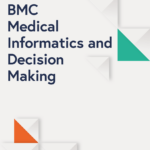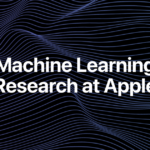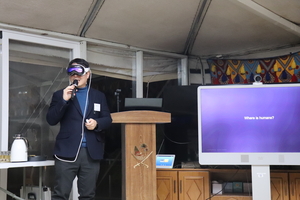In the vibrant democracy of India, where public expression manifests through protests and rallies, researchers are unveiling an innovative AI tool designed to forecast civil unrest. This system, as articulated in a recent paper on arXiv, leverages advanced techniques for analyzing news articles to identify planned events through subtle announcements embedded within the text. The research, titled ‘Planned Event Forecasting using Future Mentions and Related Entity Extraction in News Articles’ (arXiv:2511.07879), offers a promising approach to equip authorities with foresight, enabling proactive disruption management.
Technical Approach
The proposed system operates by scanning news articles for future-oriented mentions—specific phrases indicating forthcoming events. To achieve this, the model employs topic modeling and word2vec embeddings to filter and categorize relevant news content. Subsequently, it utilizes Named Entity Recognition (NER) to extract critical details such as dates, locations, and organizers. The research, published on November 11, 2025, specifically addresses the challenge of unpermitted gatherings that can escalate into significant disturbances.
The methodology is grounded in real-world applications, particularly within India, where the socio-political landscape frequently catalyzes protests. By normalizing date references and extracting pertinent entities, the system constructs a timeline of potential unrest. The paper notes, “Forecasting these events helps administrative officials take necessary action,” underscoring the tool’s practical utility.
At the core of the technology’s effectiveness is its reliance on open-source tools, which enhances accessibility and encourages broader adoption. NER models, such as spaCy or custom-trained alternatives, play a pivotal role in accurately identifying people, organizations, and locations relevant to event planning.
Research Significance and Applications
The implications of this research extend well beyond Indian borders, presenting a transformative opportunity for global event prediction. Notably, discussions on platforms such as X (formerly Twitter) highlight the expanding role of AI in various domains. For instance, Dr. Singularity remarked in August 2025 that, “AI can now identify nearly 10x more drug candidates while making them 72% safer,” reflecting the ongoing advancements in predictive AI technologies across disciplines.
Industry observations reveal parallels in sectors like finance and healthcare, as noted in a review by Asia Research News in 2023, which analyzed the advancements in 2.5D materials and their implications for AI and electronics. This interdisciplinary tech boom facilitates the development of tools like the event forecasting system, indicating a broader trend in leveraging AI for societal applications.
However, the introduction of such technology is not without ethical concerns. The potential for misuse, particularly regarding privacy and the suppression of dissent, requires careful consideration. The research emphasizes a balanced application focused on public safety while safeguarding individual rights. The authors advocate for transparent datasets to address issues of bias in the forecasting model.
The experimental results of the system demonstrated promising accuracy when tested on Indian news corpora, where the model was able to identify protest announcements effectively. This capability is important given the observation that protests are often announced well in advance to encourage participation, a factor that the model’s design capitalizes on.
Challenges and Future Directions
Despite its potential, the system faces challenges, particularly concerning the risk of false positives—misinterpreting neutral announcements as indicators of unrest. The researchers propose using ensemble methods to refine predictions and enhance the model’s overall accuracy. The ongoing evolution of AI governance is highlighted by recent updates in AI regulatory frameworks, as discussed in posts from various experts on X, including those addressing potential modifications to the EU AI Act.
To scale this technology for broader applications, the researchers suggest training multilingual models to accommodate diverse languages and cultural contexts. The paper also references foundational work in machine learning that could support these advancements, as evidenced by recent listings on arXiv within the Artificial Intelligence and Machine Learning categories.
Moreover, the ongoing investment in AI technologies remains strong, as noted by a post from Rifnote on November 12, 2025, indicating that funding for AI research continues to grow, potentially accelerating the development and implementation of such innovative tools.
In summary, the advent of this AI-driven event forecasting system marks a significant step forward in the intersection of technology and governance. While it presents opportunities for enhanced public safety and administration, it also necessitates careful navigation of ethical considerations and implementation challenges. The evolving landscape of AI research, coupled with active discussions surrounding its implications, positions this tool as a vital component in the future of societal event prediction and management.
 Brown University Launches $20M AI Institute to Revolutionize Mental Health Care
Brown University Launches $20M AI Institute to Revolutionize Mental Health Care AI Model Achieves 95% Accuracy in Cardiovascular Disease Prediction Using Longitudinal Data
AI Model Achieves 95% Accuracy in Cardiovascular Disease Prediction Using Longitudinal Data Apple Showcases AI Advancements at NeurIPS 2025 with 10 Innovative Papers and Demos
Apple Showcases AI Advancements at NeurIPS 2025 with 10 Innovative Papers and Demos Google DeepMind Launches New AI Research Lab in Singapore to Enhance Local Impact
Google DeepMind Launches New AI Research Lab in Singapore to Enhance Local Impact NIU Innovation Showcase Reveals Advances in AI, Bioplastics, and Nanomanufacturing
NIU Innovation Showcase Reveals Advances in AI, Bioplastics, and Nanomanufacturing












































































